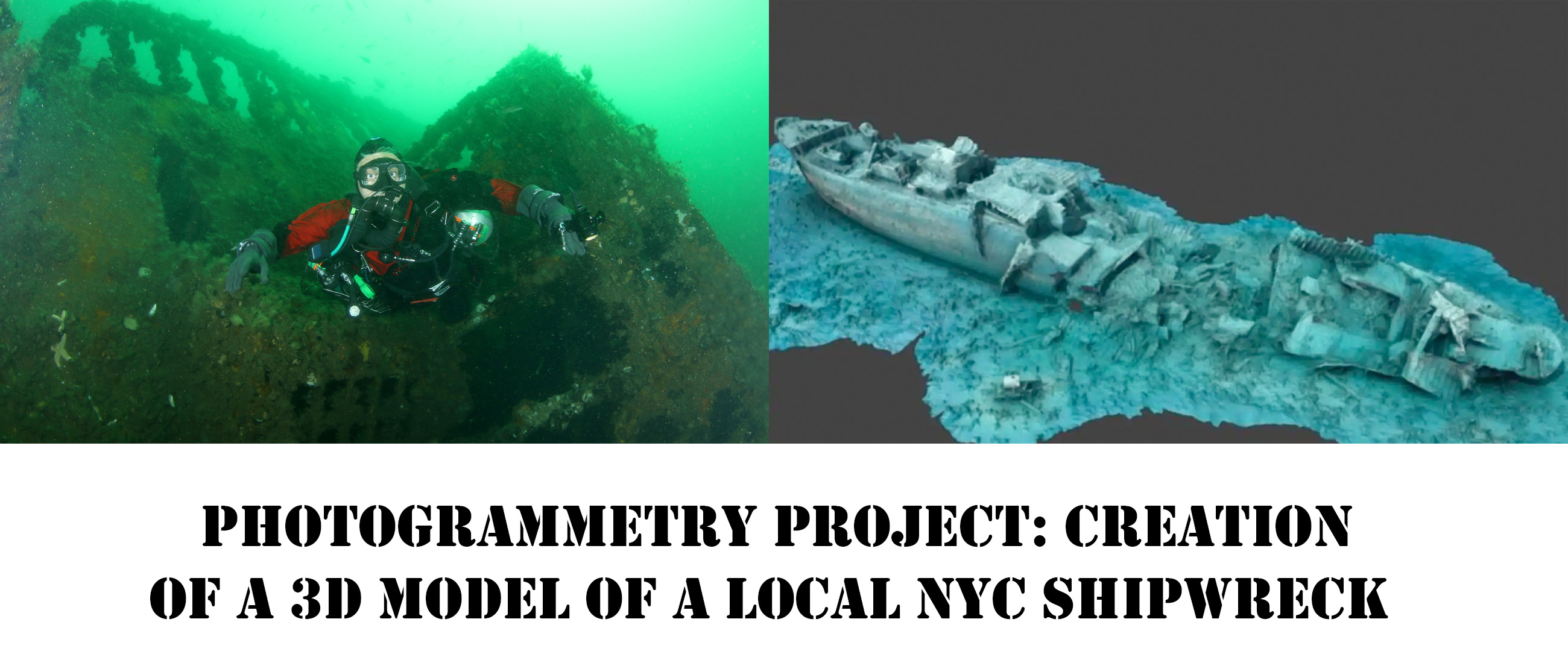
Shipwreck exploration is a big part of diving in the New York City area. We are lucky enough to have hundreds of wrecks - many of them historically significant - right in our backyard. These dives are incredibly rewarding but challenging, even to experienced divers. Although we have some days with excellent visibility, other times the light and clarity at depth is limited. Furthermore, unlike the purpose-sunk artificial reefs that are popular in many dive destinations, most of our wrecks are "real". Their scars are their history, whether they were sent to the bottom by a U-boat's torpedo or by an unfortunate collision. They are not intact or upright. Even after sinking, their bones are often disturbed by storms, collapse under their own weight, or by wire dragging to prevent a hazard to navigation.
Because of this, divers in our area take special care to learn the layout and orientation of the wreckage. Deck plans can be studied to learn the internal pathways, and frequent diving will help turn what looks at first to be a junkyard into a familiar archeological site. Divers have produced and shared their own drawings over the years to help the new visitors plan their dives and get more out of each excursion.
Because of this, divers in our area take special care to learn the layout and orientation of the wreckage. Deck plans can be studied to learn the internal pathways, and frequent diving will help turn what looks at first to be a junkyard into a familiar archeological site. Divers have produced and shared their own drawings over the years to help the new visitors plan their dives and get more out of each excursion.

The Stolt 3D project is an attempt to take this to the next level, using the wreck of the Stolt Dagali. Photogrammetry is a technique of creating a detailed three dimensional digital model of an object using hundreds or thousands of individual photographs and some very powerful computer software and hardware. The project grew out of a conversation that I had with Christopher Drew in 2020.
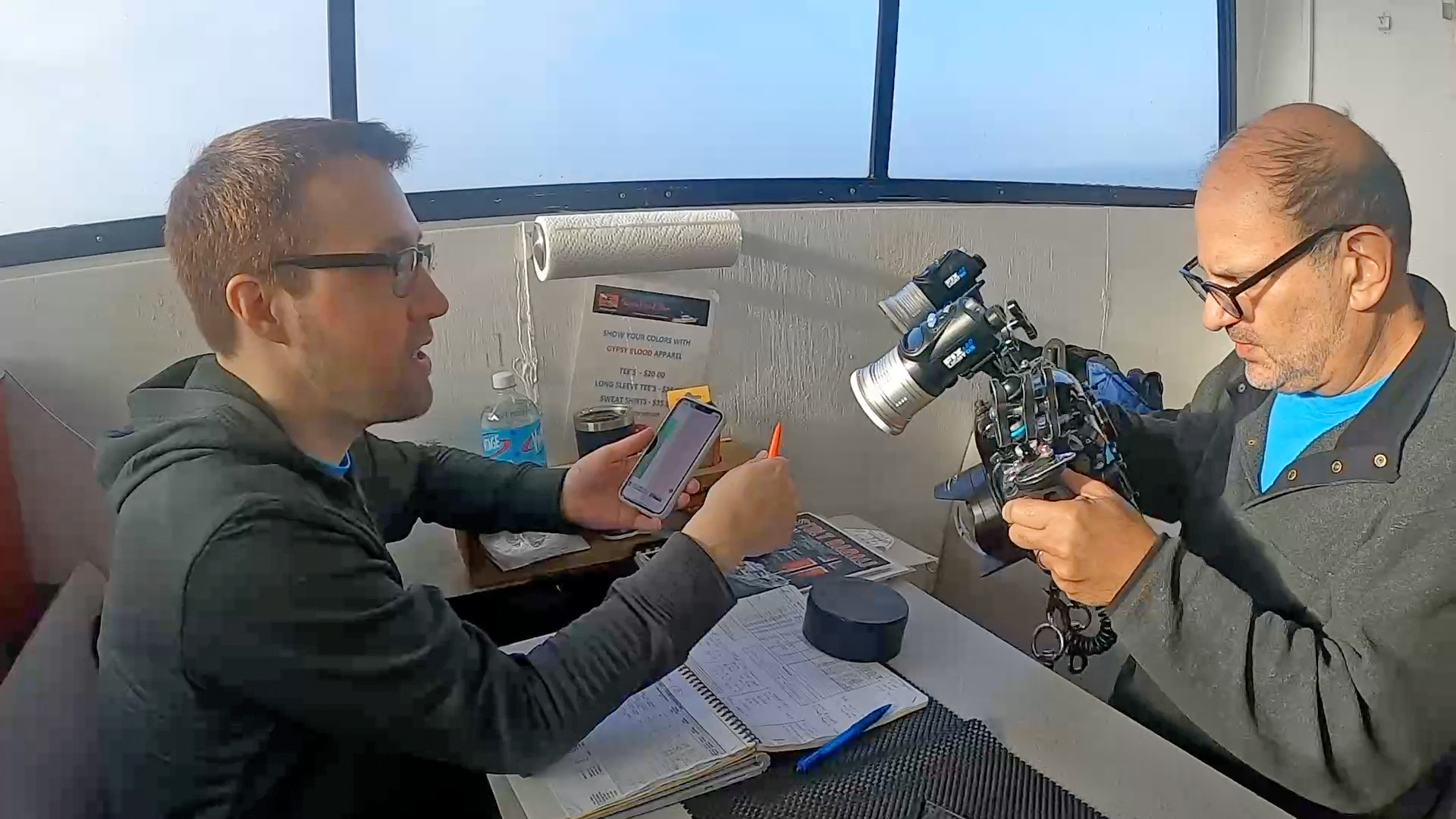
Christopher is a very talented person who has taught underwater photogrammetry to many students over the years, and who has worked on the creation of a model of a 3000 year old shipwreck off Cyprus. He has extensive technical experience in this field, and has done amazing work in the organization of the project and the logistics (he is a veteran of the US Air Force as a jet pilot).
Christopher has a detailed web page for the project, where updates will be frequently posted and where you can sign up for more information. While creating the digital model, we will be carefully documenting our processes to make this scalable and applicable to other wrecks in the future. In addition to images and video of our efforts, we will have ROV footage to follow divers in the process of taking the photographs for the model. We hope to be able to use the end result for a variety of applications, such as augmented reality or physical 3D printed models.
The Stolt was chosen for a number of reasons. First of all, it is one of those wrecks that is hard to visualize easily. Even though it is largely intact, it is the stern half of a ship sitting at an odd angle, and it is slowly collapsing over the years. Also, it is a VERY popular wreck, especially for newer local divers, so having a better understanding of the layout will help them tremendously. Finally, it is in shallow enough water and close enough to shore so that the dives to collect the images themselves will not be technically overwhelming or too expensive.
Apart from Christopher and myself, the project crew includes several other photographers - Joe St. Amand, Larry Cohen and Olga Torrey. We also have several safety divers, including Renata Rojas, Chuck Levesque, Tracy Cloherty, Bill Bobowicz, and John Orecchio (who is on the crew on the dive boat Gypsy Blood). Captains Steve and Maureen Langevin have spent time documenting the process through videography, and Joshua Gross has been piloting the ROV.
We had our first photographic training dives in the Spring of 2021 (in a pool and at Dutch Springs). We subsequently have done a number of dives on the wreck of the Stolt Dagali, generating the thousands of images necessary for the construction of the model. Although there have been delays dues to blowout days (when the sea conditions have caused us to cancel a trip), we are making steady progress and hope to have the model completed soon. There is a tremendous amount of computer processing that must happen after obtaining the images, and we anticipate several months of work after the dives have been completed.
We are all very excited about this work and I will continue to post updates on the project here.
- Michael Rothschild
Christopher has a detailed web page for the project, where updates will be frequently posted and where you can sign up for more information. While creating the digital model, we will be carefully documenting our processes to make this scalable and applicable to other wrecks in the future. In addition to images and video of our efforts, we will have ROV footage to follow divers in the process of taking the photographs for the model. We hope to be able to use the end result for a variety of applications, such as augmented reality or physical 3D printed models.
The Stolt was chosen for a number of reasons. First of all, it is one of those wrecks that is hard to visualize easily. Even though it is largely intact, it is the stern half of a ship sitting at an odd angle, and it is slowly collapsing over the years. Also, it is a VERY popular wreck, especially for newer local divers, so having a better understanding of the layout will help them tremendously. Finally, it is in shallow enough water and close enough to shore so that the dives to collect the images themselves will not be technically overwhelming or too expensive.
Apart from Christopher and myself, the project crew includes several other photographers - Joe St. Amand, Larry Cohen and Olga Torrey. We also have several safety divers, including Renata Rojas, Chuck Levesque, Tracy Cloherty, Bill Bobowicz, and John Orecchio (who is on the crew on the dive boat Gypsy Blood). Captains Steve and Maureen Langevin have spent time documenting the process through videography, and Joshua Gross has been piloting the ROV.
We had our first photographic training dives in the Spring of 2021 (in a pool and at Dutch Springs). We subsequently have done a number of dives on the wreck of the Stolt Dagali, generating the thousands of images necessary for the construction of the model. Although there have been delays dues to blowout days (when the sea conditions have caused us to cancel a trip), we are making steady progress and hope to have the model completed soon. There is a tremendous amount of computer processing that must happen after obtaining the images, and we anticipate several months of work after the dives have been completed.
We are all very excited about this work and I will continue to post updates on the project here.
- Michael Rothschild
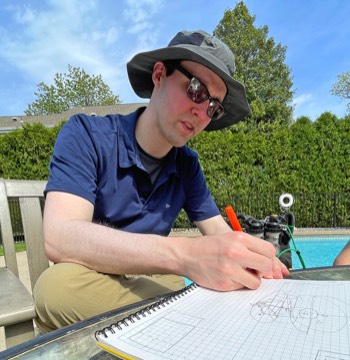

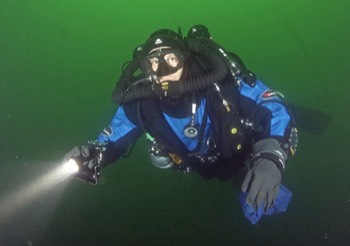
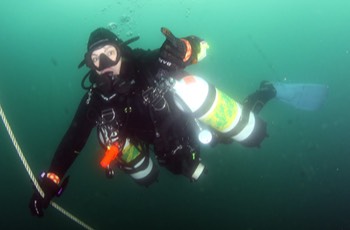

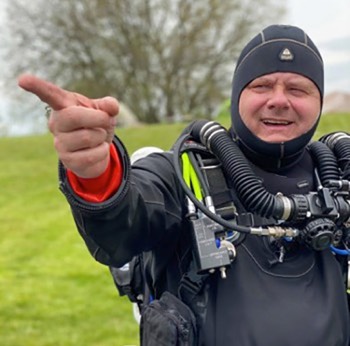
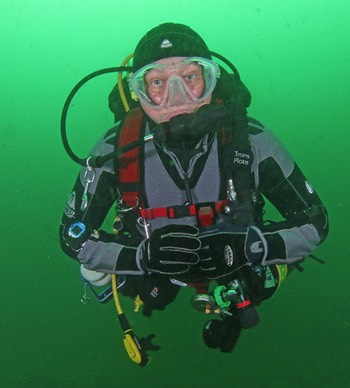
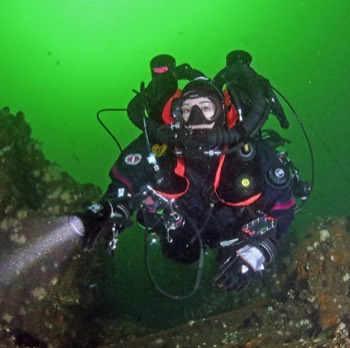

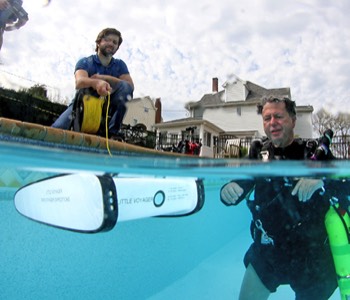
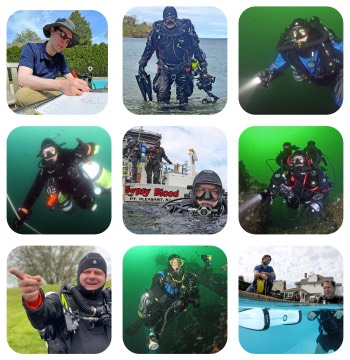
Because of this, divers in our area take special care to learn the layout and orientation of the wreckage. Deck plans can be studied to learn the internal pathways, and frequent diving will help turn what looks at first to be a junkyard into a familiar archeological site. Divers have produced and shared their own drawings over the years to help the new visitors plan their dives and get more out of each excursion.
The Stolt 3D project is an attempt to take this to the next level, using the wreck of the Stolt Dagali. Photogrammetry is a technique of creating a detailed three dimensional digital model of an object using hundreds or thousands of individual photographs and some very powerful computer software and hardware. The project grew out of a conversation that I had with Christopher Drew in 2020.
Christopher is a very talented person who has taught underwater photogrammetry to many students over the years, and who has worked on the creation of a model of a 3000 year old shipwreck off Cyprus. He has extensive technical experience in this field, and has done amazing work in the organization of the project and the logistics (he is a veteran of the US Air Force as a jet pilot).
Christopher has a detailed web page for the project, where updates will be frequently posted and where you can sign up for more information. While creating the digital model, we will be carefully documenting our processes to make this scalable and applicable to other wrecks in the future. In addition to images and video of our efforts, we will have ROV footage to follow divers in the process of taking the photographs for the model. We hope to be able to use the end result for a variety of applications, such as augmented reality or physical 3D printed models.
The Stolt was chosen for a number of reasons. First of all, it is one of those wrecks that is hard to visualize easily. Even though it is largely intact, it is the stern half of a ship sitting at an odd angle, and it is slowly collapsing over the years. Also, it is a VERY popular wreck, especially for newer local divers, so having a better understanding of the layout will help them tremendously. Finally, it is in shallow enough water and close enough to shore so that the dives to collect the images themselves will not be technically overwhelming or too expensive.
Apart from Christopher and myself, the project crew includes several other photographers - Joe St. Amand, Larry Cohen and Olga Torrey. We also have several safety divers, including Renata Rojas, Chuck Levesque, Tracy Cloherty, Bill Bobowicz, and John Orecchio (who is on the crew on the dive boat Gypsy Blood). Captains Steve and Maureen Langevin have spent time documenting the process through videography, and Joshua Gross has been piloting the ROV.
We had our first photographic training dives in the Spring of 2021 (in a pool and at Dutch Springs). We subsequently have done a number of dives on the wreck of the Stolt Dagali, generating the thousands of images necessary for the construction of the model. Although there have been delays dues to blowout days (when the sea conditions have caused us to cancel a trip), we are making steady progress and hope to have the model completed soon. There is a tremendous amount of computer processing that must happen after obtaining the images, and we anticipate several months of work after the dives have been completed.
We are all very excited about this work and I will continue to post updates on the project here.
- Michael Rothschild
Video from a photogrammetry dive on the Stolt in May of 2022
Sea trial for one of our ROVs at the Manasquan River railroad bridge
Practicing with the ROV at Dutch Springs, monitoring the photographers and safety divers
Our first pool session, doing photography of a "shipwreck" to create a 3D model
Live 3D model of the pool session "shipwreck" that you can manipulate directly